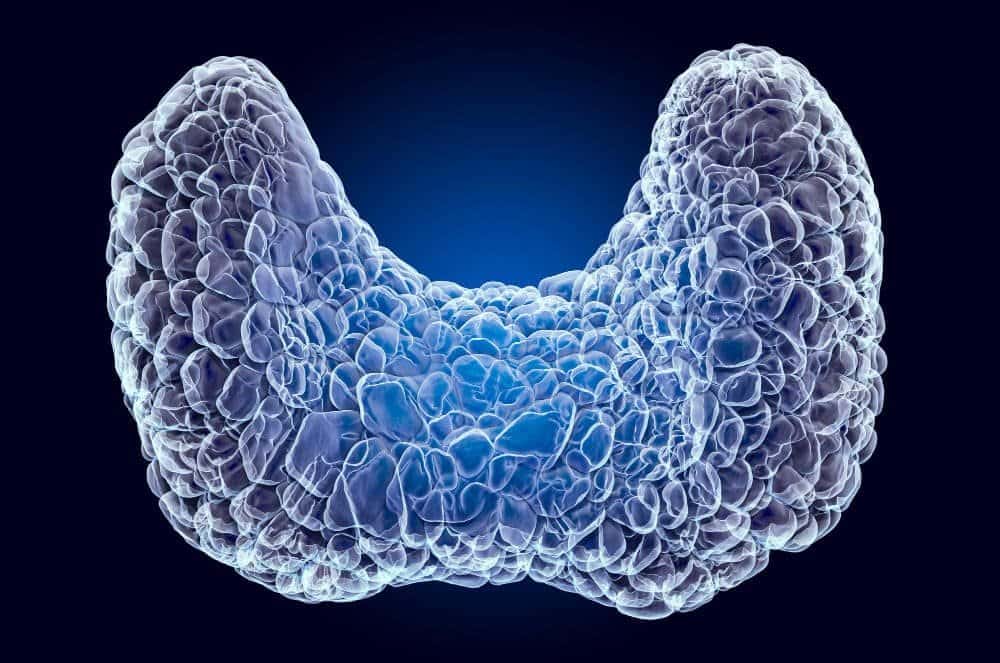When dealing with thyroid artery embolization for multinodular goiter, patients often find hope in this innovative treatment approach. This minimally invasive procedure has gained recognition as an effective alternative to traditional surgery, offering significant benefits for those suffering from enlarged thyroid glands. 🏥

What is Thyroid Artery Embolization?
Thyroid Artery Embolization (TAE) represents a breakthrough in treating multinodular goiter without requiring surgical intervention. This procedure involves blocking the blood supply to specific areas of the thyroid gland using tiny particles introduced through a catheter. The technique effectively treats enlarged thyroid nodes by reducing their blood flow, which leads to volume reduction over time.
The procedure targets the superior thyroid artery and other feeding vessels that supply blood to the problematic thyroid tissue. By occluding these arteries, the overactive thyroid glands experience reduced function, and the enlarged areas begin to shrink naturally.
How Does TAE Work for Multinodular Goiter?
During thyroid artery embolization, an interventional radiologist uses image-guided techniques to navigate a thin tube through the body’s arterial system. The catheter is carefully positioned near the thyroid arteries that feed the enlarged nodules. Small particles are then introduced to block these vessels, effectively cutting off the blood supply to the targeted areas.
This blocking process causes the thyroid tissue to undergo volume reduction, with studies showing significant reduction in nodule size within months post-procedure. The technique has gained recognition for its ability to achieve normalized thyroid function while avoiding the risks associated with traditional surgical approaches.
Benefits of TAE for Patients
Minimally Invasive Alternative
Unlike conventional surgery, TAE offers a minimally invasive option for managing multinodular goiter. Patients avoid the need for general anesthesia and large incisions, resulting in shorter recovery times and reduced complications. The procedure is typically performed as an outpatient treatment, allowing patients to return home the same day.
Effective Volume Reduction
Clinical studies report that patients experience significant volume reduction of the nodule following TAE. This reduction helps resolve compressive symptoms that often plague individuals with enlarged thyroid glands. The shrinking process continues over several months, with many patients experiencing continued improvement in their symptoms.
Safe and Effective Treatment
TAE has demonstrated superior safety profiles compared to surgical alternatives. The procedure effectively treats both benign multinodular goiter (MNG) and toxic diffuse goiter conditions. Research indicates that the technique successfully addresses hyperthyroidism while preserving healthy thyroid tissue.
Ideal Candidates for TAE
The main indication for thyroid artery embolization includes patients with:
- Large benign goiters causing compressive symptoms
- Overactive thyroid glands resistant to medical management
- Non-cancerous thyroid nodules affecting quality of life
- Patients who are poor surgical candidates
- Those seeking minimally invasive alternatives to surgery
Patient Selection Criteria
Careful patient selection ensures optimal outcomes. Candidates typically have enlarged thyroid glands with clearly defined feeding arteries. The procedure works best when the goiter has adequate vascular supply that can be safely accessed through intrathyroidal vessels.
The TAE Procedure Process
Pre-Procedure Preparation
Before undergoing TAE, patients undergo comprehensive evaluation including imaging studies to map the thyroid’s vascular anatomy. This planning phase identifies the superior thyroid artery and collateral vessels that supply the enlarged areas.
During the Procedure
The procedure involves accessing the arterial system through a small incision, typically in the groin area. Using real-time imaging guidance, the interventional radiologist navigates the catheter to the target arteries. Tiny particles are then delivered to occlude the feeding vessels, effectively blocking blood flow to the problematic thyroid tissue.
Post-Procedure Care
Following TAE, patients are monitored for a short period before discharge. Most individuals can resume normal activities within a few days, making this treatment option particularly attractive for those with busy lifestyles. 📊
Expected Outcomes and Recovery
Volume Reduction Results
Studies consistently show that patients achieve significant reduction in thyroid volume following TAE. The shrinking process begins within weeks and continues for several months post-procedure. Many individuals report substantial improvement in compressive symptoms such as difficulty swallowing or breathing.
Symptom Resolution
The procedure effectively resolves symptoms associated with enlarged thyroid glands. Patients often experience improved quality of life as the reduced thyroid volume alleviates pressure on surrounding structures. Hyperfunction symptoms also typically normalize as the treated areas reduce their hormone production.
Long-term Follow-up
Clinical outcome data demonstrates that the benefits of TAE are sustained over time. Regular follow-up appointments allow monitoring of thyroid function and ensuring continued improvement. The minimally invasive nature of the procedure means that repeat treatments can be performed if necessary.
Comparing TAE to Other Treatment Options
Surgical Alternatives
Traditional thyroid surgery, while effective, carries inherent risks including potential damage to vocal cords and parathyroid glands. TAE avoids these complications by preserving the main thyroid structure while targeting only problematic areas.
Medical Management
While medication can help control hyperthyroidism, it doesn’t address the physical size of enlarged goiters. TAE provides both functional improvement and volume reduction, offering a more comprehensive solution for patients with compressive symptoms.
Radiofrequency and Microwave Ablation
These thermal ablation techniques also offer minimally invasive treatment options. However, TAE has the advantage of treating multiple nodules simultaneously and can be particularly effective for larger goiters with complex vascular anatomy.
Potential Risks and Considerations
Safety Profile
TAE maintains an excellent safety record with minimal complications reported in clinical studies. The procedure avoids many risks associated with general anesthesia and surgical intervention. Most complications, when they occur, are minor and temporary.
Avoiding Complications
Careful technique and proper patient selection help minimize risks. The procedure’s image-guided nature allows precise targeting while avoiding damage to important structures. Experienced interventional radiologists can navigate complex anatomy safely and effectively.
Future Developments in TAE
Improving Technique
Ongoing research continues to refine TAE procedures, with new particle types and delivery methods being developed. These advances promise even better outcomes and expanded treatment options for patients with various types of thyroid conditions.
Expanding Applications
The success of TAE for multinodular goiter has led to research into its application for other thyroid conditions. This expanding scope may offer hope to patients with different forms of thyroid disease who previously had limited treatment options. ⚕️
Making the Decision
Patients considering TAE should undergo thorough evaluation by an experienced interventional radiologist. This consultation includes review of imaging studies, discussion of treatment goals, and assessment of individual risk factors.
Patient Education
Understanding the procedure, expected outcomes, and recovery process helps patients make informed decisions about their treatment. The minimally invasive nature of TAE makes it an attractive option for many individuals seeking effective goiter management.
Conclusion
Thyroid artery embolization represents a significant advancement in treating multinodular goiter, offering patients a safe and effective alternative to traditional surgery. This minimally invasive procedure achieves remarkable volume reduction while preserving healthy thyroid tissue and avoiding surgical complications.
With continued improvement documented in clinical studies and superior outcomes achieved through careful patient selection, TAE has gained recognition as an excellent treatment option. The procedure’s ability to resolve compressive symptoms while maintaining safety profiles makes it particularly valuable for patients seeking modern, effective thyroid care.
For those experiencing symptoms from enlarged thyroid glands, consultation with an experienced interventional radiologist can determine if TAE represents the right treatment approach. This innovative technique continues to improve the management of thyroid conditions, offering hope and healing to patients worldwide. 💙

 العربية
العربية 


